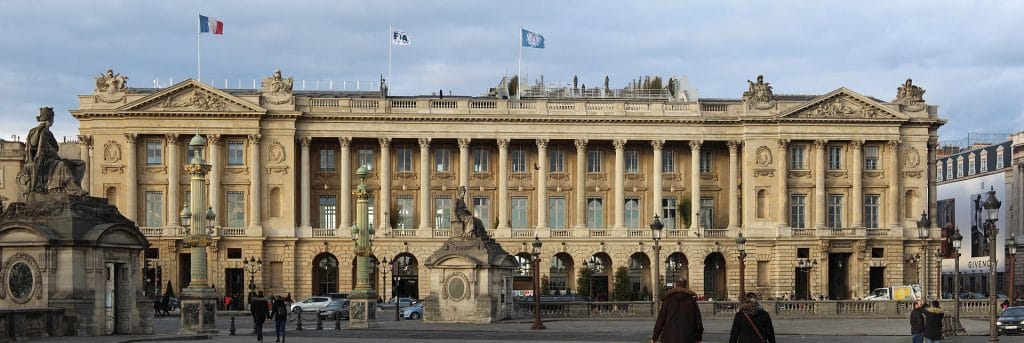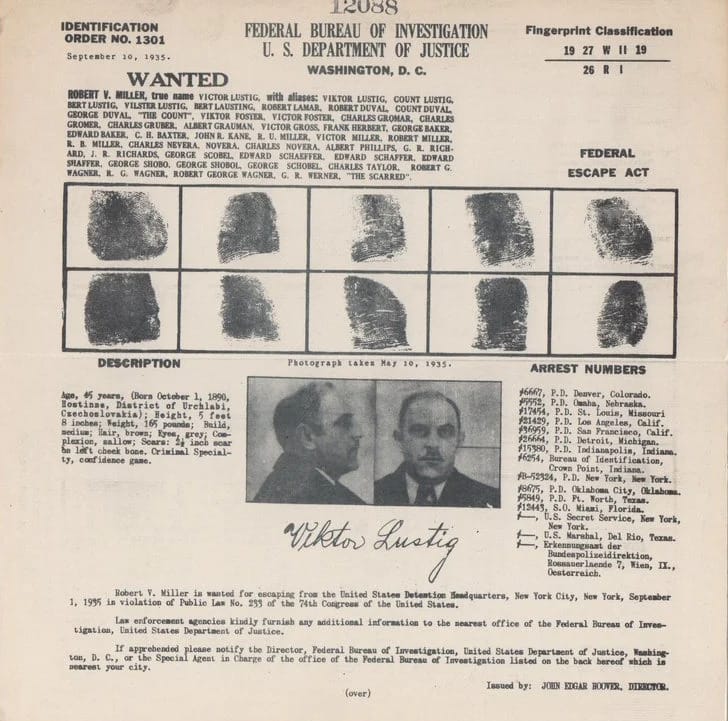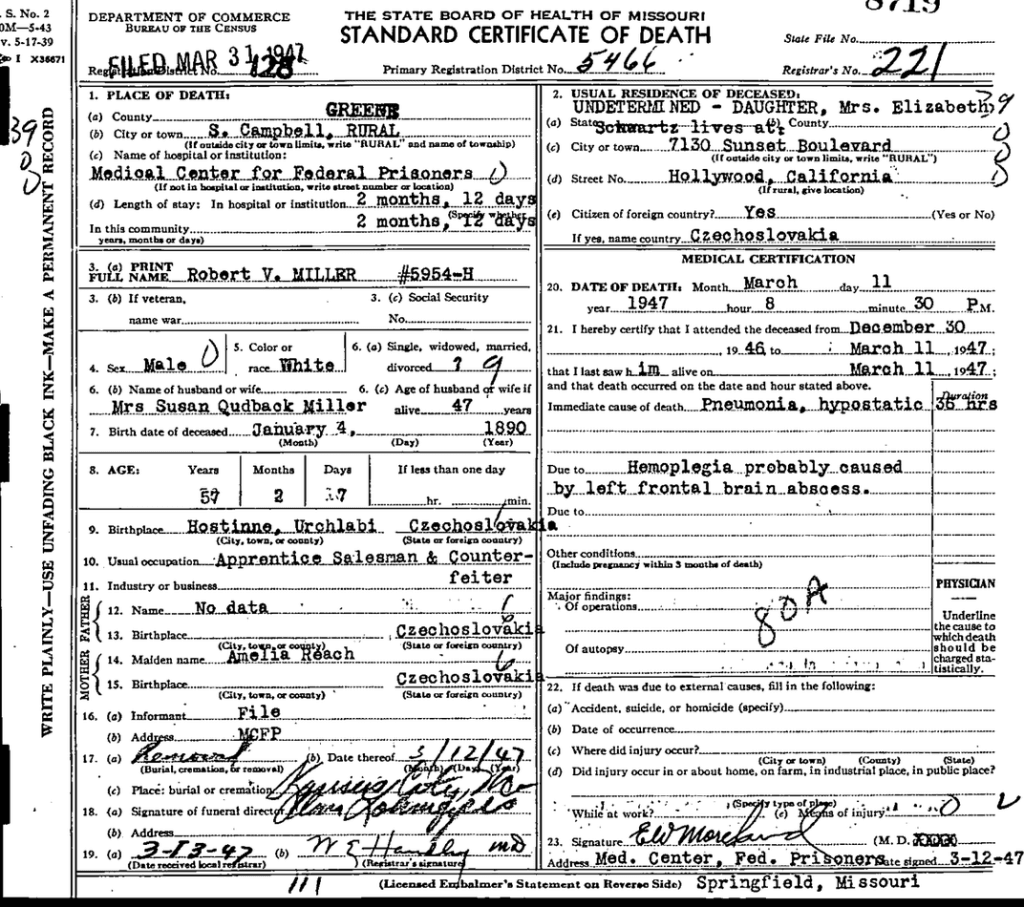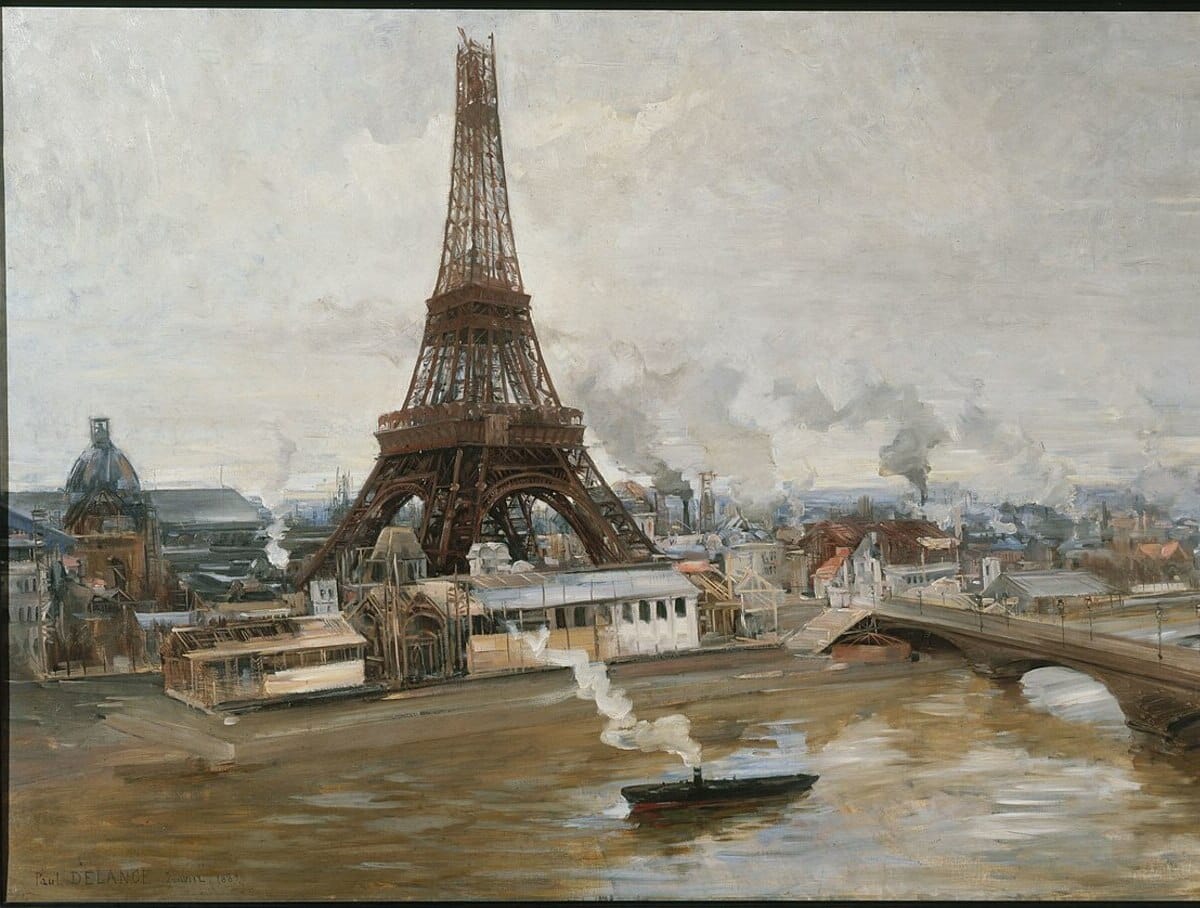In many articles about famous scammers you can find mention of Victor Lustig, who managed to sell the main attraction of Paris twice. We decided to check the authenticity of this story.
The story about the famous swindler Victor Lustig was published by many publications - for example, it is on the websites of the newspaper "Kommersant", historical magazine "Amateur" and magazine "Around the world" This story was also shared on social networks: Facebook, "Zene" And LiveJournal. In addition, in 1964, director Claude Chabrol’s short story “The Man Who Sold the Eiffel Tower” was dedicated to the scam in the film “The most beautiful scams in the world"(1964).
The story of Victor Lustig is well known, but often such stories turn out to be urban legends. For example, on British sites you can meet a biography of one Arthur Ferguson, who allegedly sold Nelson's Column in Trafalgar Square in London to an American tourist in 1923. He also allegedly sold Big Ben, Buckingham Palace, the White House in Washington and the Statue of Liberty in New York. But no one brought any documentary evidence of Ferguson’s existence - no criminal cases, no death certificate, or even a grave.
But the traces of Victor Lustig are much easier to find. He was born in 1890 on the territory of Austria-Hungary and devoted his entire life to various frauds. The most famous case was the Eiffel Tower scam. March 13, 1925 Lustig (or rather, Count Lustig, as he introduced himself, although he was not a count at all) received guests in a luxury Parisian hotel on Place de la Concorde.

He posed as an official and convened representatives of steel companies, to whom he secretly told about the fate of the Eiffel Tower. Lustig assuredthat maintaining the tower is too expensive for the city, and that technical defects were found in it. In addition, he said, the decision to demolish the tower also had some political implications. His proposal was as follows: the one who offers the highest amount will have the right to take the tower for himself.
In fact, the intrigue was even more interesting: at that meeting, only one entrepreneur was real - Andre Poisson, the rest were in collusion with the swindler. As a result, Poisson wrote a check to Lustig five days later. When the deception was revealed, Poisson was embarrassed to report to the police. And the details of this story surfaced ten years later in the United States, when Lustig was arrested for other crimes. Jeff Maish, author books about Lustig, found evidence of US Secret Service agent James Johnson, who studied the past of the famous swindler.
Much less is known about the second case of the sale of the Eiffel Tower. The same Maish writes that Lustig soon decided to try the same scheme again. But then the “count” learned that one of the potential buyers had contacted the police, after which Lustig hastily left for the United States. It is not known for certain whether he managed to earn any money from this.

Lustig lived in the United States since 1917, but his fraud took on an impressive scale already in the 1930s, after the tower scam. He counterfeited banknotes, and did it very well. Smithsonian Magazine leads Joseph's words Bowling from the American Numismatic Association, the leading expert on counterfeit bills: “These were bills of excellent quality. Lustig at one time was a serious competitor to the US Treasury.”
Then the hunt for the swindler began. His case was handled by Secret Service agent Peter Rubano. For several years, Lustig hid from law enforcement until Agent Rubano caught him on the street in New York in May 1935. In September of the same year, Lustig escaped from prison in the most picturesque way - he sawed down the bars and made a rope from torn sheets. A month later he was arrested again in Pittsburgh.
IN newspapers of the time Lustig sometimes appears under a different name: Robert W. Miller. The swindler had dozens of fake passports, and investigators found it difficult to determine which name was real. After a high-profile trial, Victor Lustig was sentenced to 20 years in prison and sent to the famous Alcatraz prison, where, as wrote newspapers, "he joined Al Capone and the other Napoleons of the underworld."
Lustig was ill a lot and died in March 1947 in Missouri, in a medical center for prisoners. The death certificate is in the name under which he was sentenced, Robert W. Miller.

Thus, the story of Victor Lustig, who sold the Eiffel Tower, is confirmed by the testimony of the US Secret Service, and his other crimes are confirmed by documents from the FBI, the Department of Justice and other official departments.
Cover photo: Paul-Louis Delance, "Building the Eiffel Tower", 1888 / Wikimedia Commons
Is it true
- Smithsonian Magazine. The Man Who Sold the Eiffel Tower. Twice.
- Is it true that a fraudster upgraded the Zimbabwe government to Windows for $40 million?
If you find a spelling or grammatical error, please let us know by highlighting the error text and clicking Ctrl+Enter.






